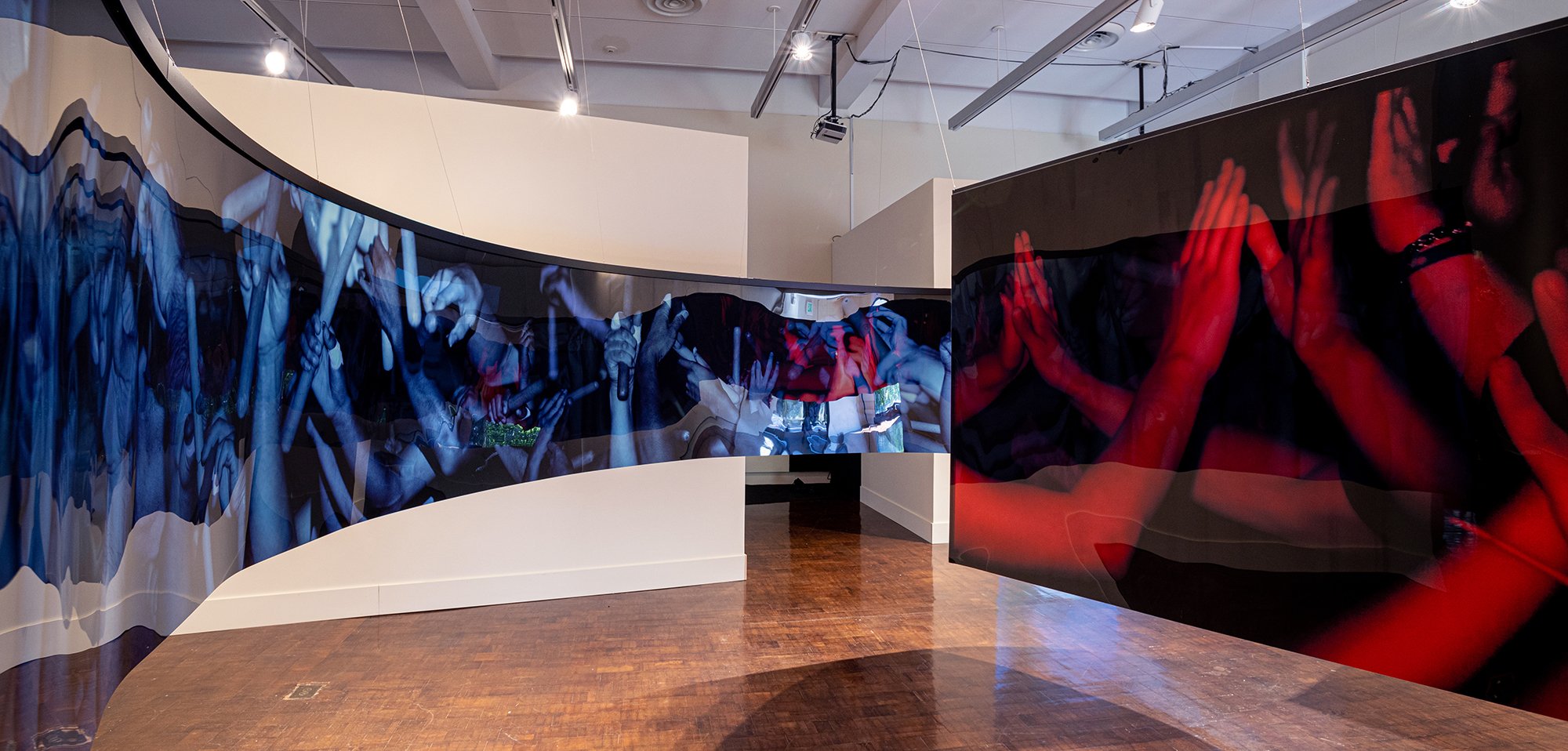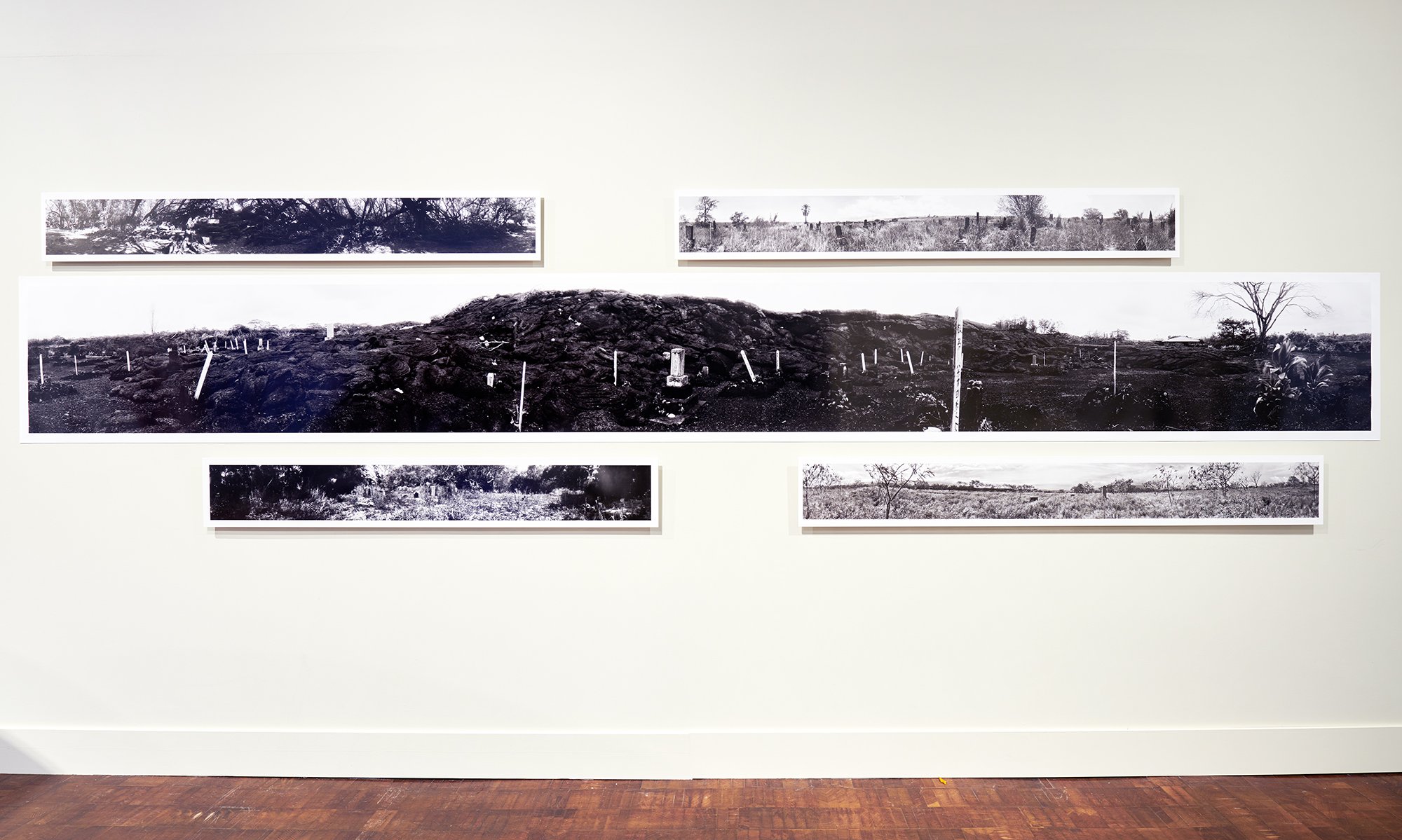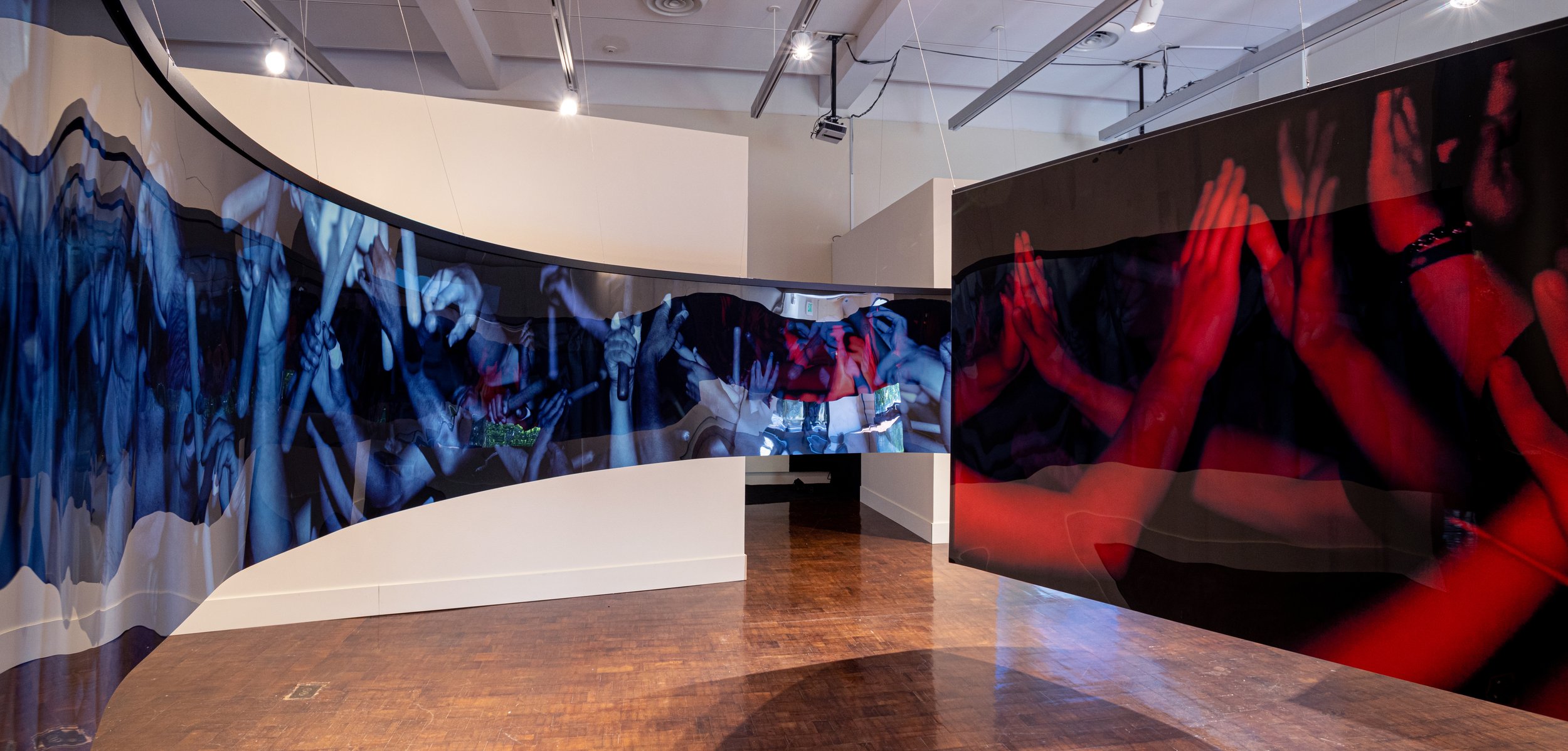hawai‘i triennial 2022
@ HONOLULU MUSEUM OF ART
Ai Iwane
b. 1975, Tokyo
lives and works in Tokyo
Installation views: Ai Iwane, KĪPUKA series, Honolulu Museum of Art, HT22, Honolulu. Courtesy of the artist. © Ai Iwane. Photos: Christopher Rohrer.
When Ai Iwane first witnessed the obon festivals of Hawai‘i in 2006, the Tokyo-born photographer became fascinated with the varied demonstrations of bon dance found throughout the islands. Observed in the summer months to honor ancestral spirits, the Buddhist tradition came to Hawai‘i via an influx of Japanese immigrants in the latter part of the nineteenth century—most of whom toiled for long hours on sugarcane plantations.
KĪPUKA (2006–), selections from which appear in Hawai‘i Triennial 2022, represents Iwane’s ongoing examination of the bon dance, tracing the parallel narratives between Hawai‘i and Fukushima, where the dance originated. The Hawaiian word kīpuka refers to an oasis in a bed of fresh lava, a chasm from which new plant life springs forth. In this spirit, Japanese migrants re-seeded the bon dance in Hawai‘i, where it loosely resembles the original but takes on the terroir of its new land.
The cacophony of hands slapping hands in the energetically charged KĪPUKA: Paia Mantokuji Soto Mission (2015) recalls the fiery plumes of lava seen during a volcanic eruption, signaling at once destruction and renewal. The work underscores the ways in which obon celebrations in Hawai‘i break from traditions in Japan: they tend to be larger and more festive and, in a show of communal solidarity, the dancers—young and old—come from diverse backgrounds that are not necessarily Japanese. The work takes the form of an elongated panorama, denoting a repetitious continuum of time. To capture the photograph, Iwane used a hand-wound Kodak Cirkut camera she acquired in Maui, where it was used in the 1930s to commemorate Japanese funerals in Hawai‘i and document all in attendance with a 360-degree panoramic image.
Iwane further explores ancestral continuity in KĪPUKA: Shosuke Nihei, Kailua Camp (2016), in which she projects a family portrait of Japanese immigrants in Hawai‘i onto a field of sugarcane at night, ensnaring spirits of the past with the natural life of present place. Unlike ghosts, these ancestors do not haunt but, rather, embody the sugarcane, appearing inextricably and materially entwined.
In No Man Ever Steps in the Same River Twice (2020), lava consumes roads, fields, and Issei cemeteries, forcing humans into resigned acceptance. Traces of the Issei who brought the bon dance and the popular bon song ‘Fukushima Ondo’ to Hawai‘i are fading; their towns covered by sugarcane left to grow wild and their graves overtaken by lava. In Fukushima, from where they migrated, the 2011 earthquake and ensuing tidal wave and nuclear meltdown have made towns uninhabitable, displacing tens of thousands. The three-channel video alternates between Hawai‘i and Japan, cycling through the pain of loss and dislocation from place and the promise that change brings in starting anew.
Framed around the Buddhist concept of the impermanence of the world, Iwane’s work neither dwells on loss nor lingers long on renewal, but instead flows with constant motion, negotiating memory and tradition while seeking connections to place and interrogating what endures and transcends the transience of life and the erasures of time.
This project is supported in part by a grant from the Nomura Foundation.
Ai Iwane, KĪPUKA: Shosuke Nihei, Kailua Camp, 2016, pigment print, 111.8 x 164.7 cm. Courtesy of the artist. © Ai Iwane.
Ai Iwane. Courtesy of the artist.
Ai Iwane was born in Tokyo, Japan in 1975 and relocated to the United States in 1991. In 1996, she became an independent photographer after working as an assistant back in Japan. Since 2006, Iwane has focused on the Japanese community’s culture in Hawaii and Fukushima from the perspective of immigration and put research into her works.
Her first monograph KIPUKA was published by Seigensha Art Publishing in 2018, which was awarded The 44th Kimura Ihei Photography Award (2019). Iwane has participated in both group and solo exhibitions. Some group exhibitions include the Dali International Photography Exhibition (2019) and the 2020 Fukushima Biennial. Her latest involvement in solo exhibitions was the Komaki Manabi Sozokan and the tette Gallery in 2020. Her latest work, “A NEW RIVER,” which was photographed in April and May of 2020 amid the Covid-19 pandemic, was recently collected in full by the Tokyo Photographic Art Museum.







